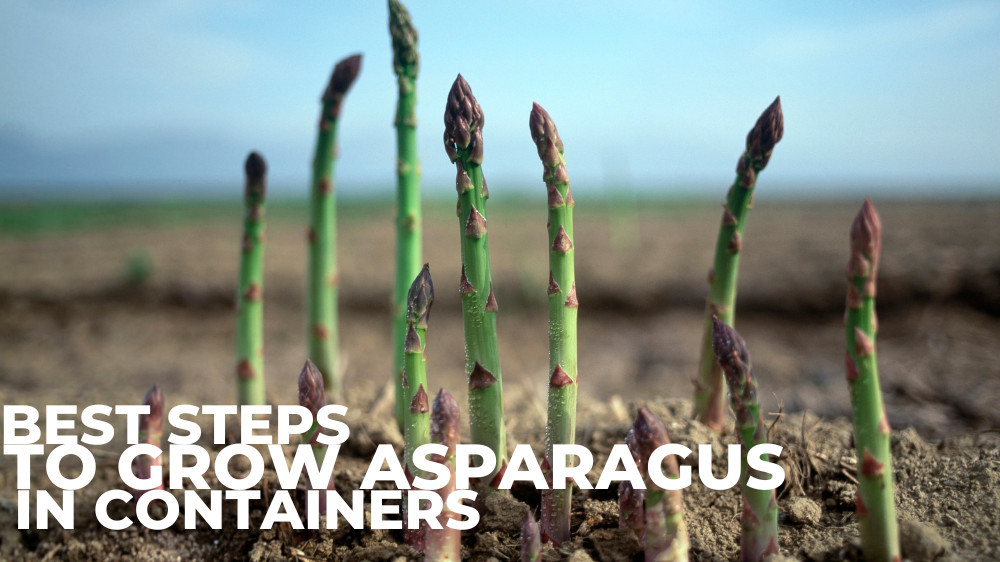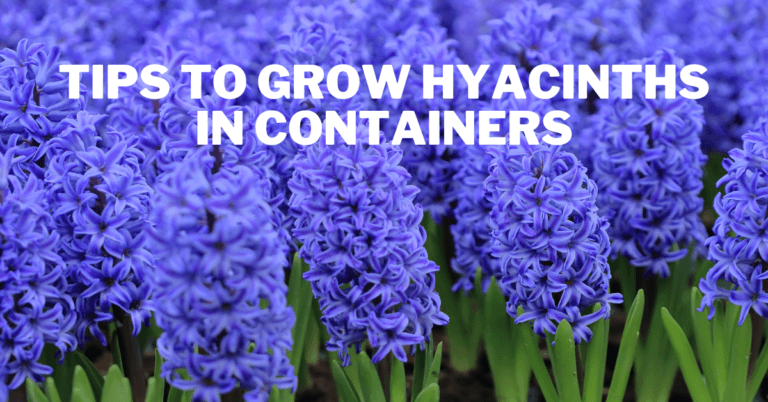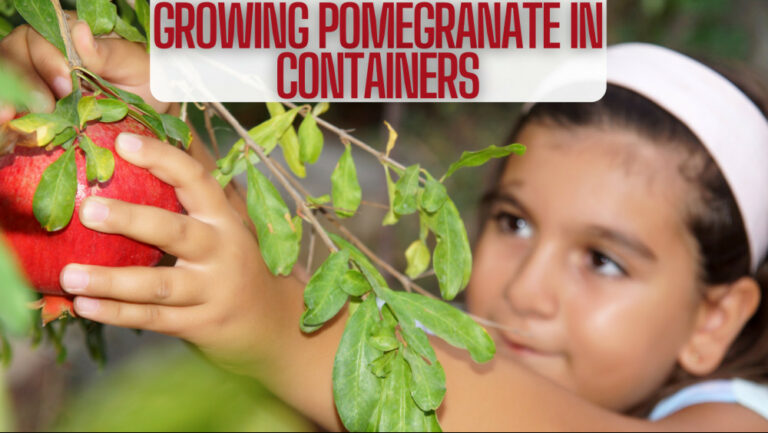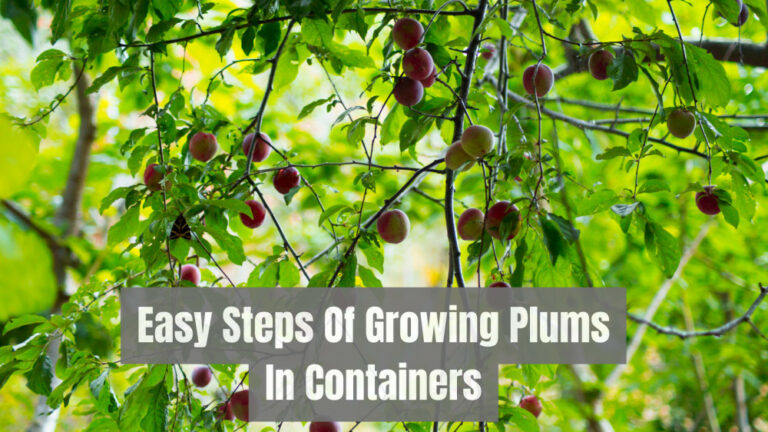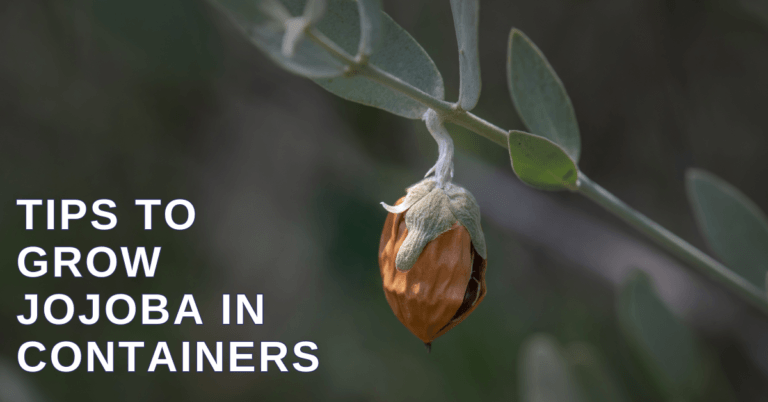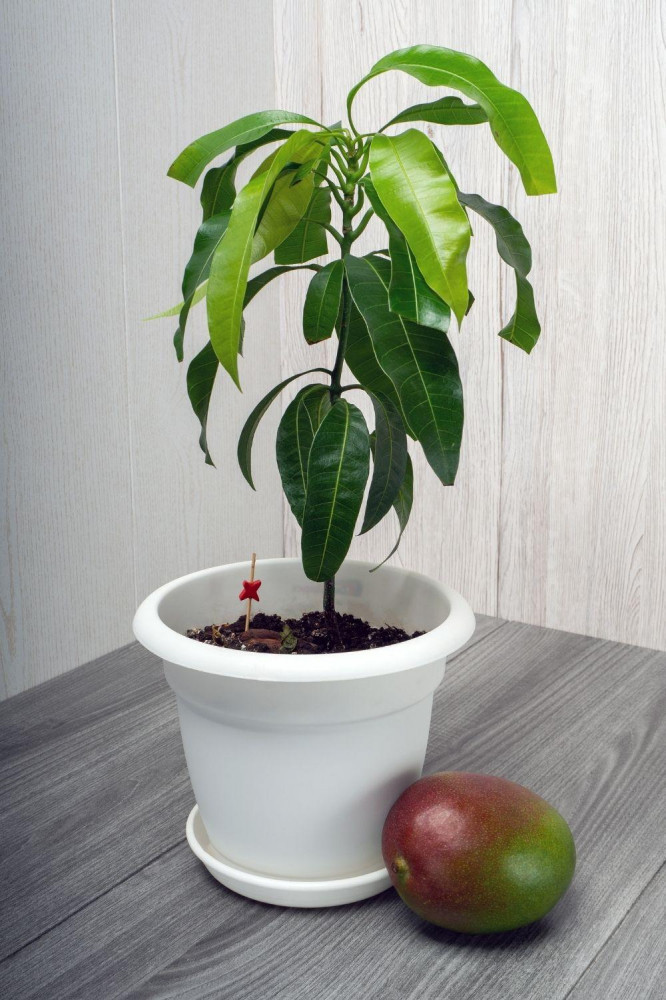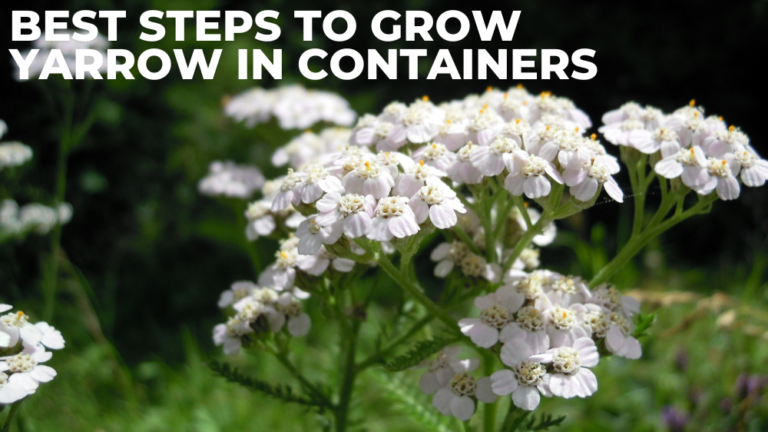Best Steps To Grow Asparagus In Containers
Best Steps To Grow Asparagus In Containers
A resilient perennial crop, asparagus is an excellent addition to both traditional kitchen gardens and permaculture food forests.
Gardeners can anticipate yearly crops of tender asparagus shoots once plants are established.
Growing and caring for these plants has never been simpler, thanks to the development of new cultivars.
But can asparagus be grown in a pot? Learn more about grown asparagus in containers by reading about it.
What Is An Asparagus?
The herbaceous perennial plant known as garden asparagus (Asparagus Officinalis) is a member of the lily family.
The plant's young shoots are consumed—the thin spears with the pointed, scaled tips. These grow into a massive, fern-like plant with feathery leaves that die back in the fall if left unchecked.
There are asparagus plants all over the world. The top four producers are the United States, Germany, Peru, and China. They flourish in temperate regions where the ground freezes.
The spears emerge from the ground due to the spring thaw and rising temperatures. They are harvested when 6 to 8 inches tall and have spears at least half an inch thick.
The harvest stops when the spears reach only the thickness of a pencil. They begin thin, grow thicker as the season progresses, and then taper off again.
Asparagus cultivation does require time and space. Once the seeds are planted, it can take up to 3 to 4 years for the plant to begin producing edible spears.
Asparagus has an elevated status as a luxury vegetable due to the lengthy wait and the short season, which explains why it occasionally costs more at the market. It's one of the simplest foods to prepare and cook, though.
Origins Of Asparagus
The distinguished asparagus is a Liliaceae family member and a distant onion relative. It has been consumed for over 2000 years and has a history that rivals the leek.
This garden plant was first domesticated in the nations of the eastern Mediterranean, and evidence of wild varieties has been found in Africa. According to archaeologists, it was also grown in Egypt.
The Greeks were fascinated by the biological and medicinal properties of asparagus because they believed it to be a sacred plant with aphrodisiac properties.
The ancient Greek physician Hippocrates used asparagus to treat urethral and diarrheal pains. This plant contains asparagines, which are known for their diuretic effects.
The Romans, for their part, appreciated the plant's gastronomic qualities. They consumed it as an entrée or as a side dish for fish.
Even though asparagus was largely forgotten during the Middle Ages, the Arabs continued to grow it.
Asparagus was transported to Europe by Caesar's legions after they returned from the East.
Asparagus was first served in royal courts throughout Europe in the 16th century, and in the 17th century, it was grown in France for Louis XIV, who, it seems, enjoyed it quite a bit.
According to the records, it was grown exclusively for the needs of the nobility at that time and was the size of a swan's feather. Asparagus didn't appear on the local market or in many culinary works until the 18th century.
Green asparagus is now grown in China and America. Most of Europe is where the white variety is grown.
Different Varieties Of Asparagus
Asparagus comes in three main varieties today, which you can find in the market. Asparagus are white, green, and purple in these colours.
1. Green Asparagus
Initially, there is green asparagus. Additionally, it is the type of plant you can typically grow in your garden.
The variety will determine whether the spears are thin or thick. You can pick from a wide variety of green asparagus varieties.
The seven to eight-inch-long and pointed spears of the Jersey King give them their distinctive appearance.
The Jersey Knight is another type with long, thin spears that measure eight to ten inches long. The spears of a third variety, the Jersey Giant, are thicker and shorter.
2. White Asparagus
Do you understand the distinction between white and green asparagus? Mostly, it's their growth strategy.
White asparagus is grown quite differently from green asparagus, which is simply planted and left to sprout.
Underground is where the white asparagus is grown. Simply put, farmers or gardeners will place a black plastic bag or pile soil on top of it.
This will prevent the plant from receiving sunlight, which inhibits the vegetable's ability to produce chlorophyll.
Because chlorophyll isn't present, this would lessen the taste of grass. The flavour is also much better, sweeter, and less bitter than the green variety.
It is primarily grown in regions with mild climates. One common variety of white asparagus is Gijnlim, which does best in sandy or clay soils. It yields superior results.
3. Purple Asparagus
Purple asparagus tastes like other varieties because it was grown from green asparagus. Only the skin of its plant is coloured purple; the rest still has green foliage.
Its flesh, however, can be anything from light green to creamy white. Its superior tenderness and sweetness compared to other varieties are among the factors that make it the preferred option.
When it has been cooked, the difference in taste is especially noticeable. It may even have hints of barley and almond flavour.
Popular Asparagus Varieties
The colour of the asparagus crowns is a common way to distinguish between different varieties. Investigate these well-liked asparagus varieties.
1. Precoce D’Argenteuil Asparagus
Europe, where the Precoce D'Argenteuil originated, is where it is most well-known. Its name, which roughly translates to “early,” makes it a top choice for asparagus lovers who don't like to wait.
This heirloom variety has a lovely flavour. Its stalk is a very light shade of green with hints of pale pink.
It has rosy pink tips as well, which adds to its allure. It blossoms quickly and starts to flourish in its second year. This variety thrives in zones 5 to 8 and prefers full sun.
2. Wild Asparagus
The name of this asparagus variety makes it clear that it can only be found in the wild. It's simple to find if you know where to look; just be cautious about telling too many people where it is.
There are wild asparagus plants in every state in the union. But it is more frequently discovered close to the coast, on cliffs and dunes, and in places with more moisture.
Compared to its cultivated cousins, wild asparagus is much longer and thinner. The wild asparagus bush typically reaches a height of three feet.
You shouldn't wear gloves to pick the flowers because the thorns are soft. It should be harvested in the early spring, like all asparagus.
Its flavour is more delicate. If you aren't certain that it is wild asparagus, even though it very much resembles green asparagus, don't eat it.
3. Apollo Asparagus
Green asparagus comes in the Apollo variety. It is adaptable in that it thrives in both cold and hot climates.
It is very resistant to rust, pests, and diseases like fusarium. Since it produces a large crop, this variety of asparagus is typically harvested earlier than other varieties.
It is smooth and appealing, and it is a dark green colour. The tips of some stalks are slightly purple. Since Apollo asparagus freezes well, you can have a good supply for the remainder of the year.
4. Mary Washington Asparagus
The Mary Washington variety is one of the most well-liked varieties in America for over a century. It is an old-fashioned variety that consistently yields crops.
It thrives in zones 3 to 8. For the best yield, this asparagus prefers full or partial sun. The stalks have light purple tips on a deep green base. The uniformly long stalks have attractive feathery green foliage that is also green in colour.
The Mary Washington asparagus has more tender spears than other varieties and is a much older variety. Also, it produces the most excellent harvest.
5. Atlas Asparagus
The Atlas asparagus grows best between 45 and 85 degrees Fahrenheit and tolerates both hot and cold climates.
So long as it gets six hours of sunlight each day. It can withstand both drought and light and hard frost.
Atlas asparagus has a high tolerance for fusarium and is resistant to most diseases. It has a dark green colour with a purple tint on the tips and is very strong.
6. Purple Passion Asparagus
The Purple Passion variety has a purple colour that gradually lightens during cooking, as one might anticipate.
For this reason, it tastes much more tender and sweeter, thanks to the higher sugar content.
Compared to its green cousins, it is considered a connoisseur variety and is, therefore, harder to locate in stores.
It cooks and freezes well and is a preferred choice for salads. Zones 3 to 8 are best for this species.
7. UC 157 Asparagus
In 1978, a hybrid variety of asparagus that included both male and female plants was created. Its high yield makes it one of America's most viable and well-liked varieties.
Although it thrives in all growing zones, this variety performs best in warmer environments. The majority of diseases that affect asparagus are sporadic. It has a light green hue and consistently grows stalks.
8. Viking KB3 Asparagus
One of the newest hybrid asparagus types, this variety is a subtype of Mary Washington. Its hardy variety yields numerous stalks, making it a well-liked commercial choice.
This variety typically grows to 10 inches and should be harvested once the stalks are thin. It has a delicious, meaty flavour and can also be harvested early.
It is a hardy variety that can thrive in most climate zones. This species includes both males and females.
9. Jersey Series Asparagus
Jersey Giant, Jersey Knight, and Jersey Supreme are among the hybrid all-male plants that make up the Jersey Series of asparagus plants.
The Jersey Giant is resilient and thrives in the most chilly and cool environments. It typically reaches seven to nine inches and has a delicious and meaty texture.
They have thick spears and are a perennial plant so that you can use them for a long time. Most climates peak development in late spring and thrive best in zones 4-6.
Steps To Grow Asparagus In Containers
Container Requirements
Choosing the right-sized container for growing asparagus is one of the most critical decisions. The entire operation could fail if your pot is the wrong size.
Since asparagus plants are perennials, their roots require a lot of room to spread, and containers can be very restrictive.
This means that each container can only hold one plant. Your plant will likely experience poor health and possibly develop a root disease that will kill both plants if you try to fit more than one plant into a container. Not at all.
To grow potted asparagus plants, you must have a pot at least 20–24 inches deep and 20–24 inches in diameter.
These plants can be grown in plastic or terra cotta containers, but most people choose plastic because it is less expensive and less likely to break.
Another essential step is ensuring several drainage holes are available on the container's underside.
Standing water in pots should never be allowed because it can kill plants more quickly than most diseases.
Add Gravel To The Pot
Here is another method to avoid giving your plants wet feet, which they detest. You need drainage holes but can also fill the pot's base with gravel.
Try filling each container you use to grow asparagus with two inches of gravel.
This not only improves drainage and lessens the risk of your plants developing fungi that could harm or kill them, but it also lowers the risk of your plants developing wet roots.
Soil To Grow Asparagus In Containers
Sorry, you cannot remove soil from your ground and place it in a pot. In addition to weed seeds, that soil may contain harmful bacteria for your plants. Get a potting soil blend instead from your local garden center.
Combinations of compost, perlite, vermiculite, or peat moss create sterile soil. It's made to keep moisture inside, essential for container gardening.
The pH range for the ideal soil for asparagus is 6.5 to 7.5.
Lime can raise pH levels, and sulphur can be used to lower them. You can find all of these at your neighbourhood garden center.
Compost should be added to your soil as well. It helps by increasing drainage and adding nutrients your plants require for growth.
Time To Plant Asparagus
Depending on whether you're planting seeds or bare root crowns, there are different times of the year when you can plant asparagus in pots.
You can move around more efficiently with pots, benefiting from warmer temperatures inside the greenhouse, porch, or polytunnel.
- Plant asparagus seeds in indoor pots in February, then transplant them outside in June to harden off.
- In March or April, plant asparagus seeds in outdoor pots.
- In March or September, plant asparagus crowns in containers.
Grow Asparagus From Seed
When growing asparagus from seed, there are no tricks. Only be patient. The germination period for asparagus seeds is between 21 and 28 days.
We advise soaking seeds for a few hours before planting them in 5-centimetre pots or a propagator.
Plant the seeds in fresh compost at a depth of 1 cm. You should start your seeds in a propagator or a greenhouse, then transplant them to the pot or container where they will grow when they are about 5 centimetres tall.
It might take 10 to 12 weeks. Before planting them outside, ensure that any frost threat has passed.
You can plant your asparagus seedlings together if you prefer thinner asparagus spears. More space will be required between thicker spears.
Sunlight To Grow Asparagus In Containers
In full sun, asparagus grows most effectively. Therefore, you must give it at least 6 to 8 hours of sunlight daily. Although germination and growth will be slow, it can grow in some shade.
The ideal temperature range for the plant is between 75 and 85 degrees. The plant won't grow well if the temperature is too high or too low. Additionally, the asparagus may lose its shape if it is too high.
The benefit of growing asparagus in a pot is that you can move the pot if necessary. This can be used to shield the plant from extreme heat or cold.
You can move the pot to a cooler area if it's too hot. Bring the pot inside if it's too cold or cover it with a row cover.
Watering Requirements
Once it reaches maturity, asparagus is a drought-tolerant plant that can endure even in low-water situations. However, it requires a lot of water during its formative years when it is young and growing.
I suggest ensuring the potting soil is consistently moist enough for the asparagus plant to receive the required water. Checking on the potting soil every morning is the best way to accomplish this.
If you stick your finger 1-2 inches into the potting soil, it's time to water the plant, and it doesn't feel moist.
You should keep adding water when deep watering until it drains through the drainage holes at the pot's base.
This helps the plant grow a deep and robust root system by ensuring the water reaches every part of the potting soil.
A watering can is used to water the potting soil. Set up a drip irrigation system with a timer if your container garden contains a lot of plants.
This will make it easier for you to water the plants.
Mulch can be added to the potting soil to help it retain moisture for a longer period. The mulch keeps the potting soil warm and prevents it from drying quickly.
Grass clippings, dried leaves, wood chips, hay, or moss can all be used as mulch on top of potting soil.
Make sure to add the mulch only once the seedlings have a few inches of growth. If not, the mulch will smother the seeds and stop them from sprouting.
Fertilizer Regularly
It's a great idea to scatter some compost or composted manure around your plants once a month.
This practice is known as side-dressing your plant. You could even use compost tea to water the plant.
Throughout the growing season, it provides the plants with an additional boost of nutrients. You can also give your plant fertilizer as an additional option.
After planting in the spring, you can surround the plant with a balanced fertilizer of either 10-10-10 or 15-15-15 in ratio. The fertilizer will feed the plant for months.
Harvesting Asparagus
The most unfortunate aspect of harvesting asparagus is that it takes three or more years.
The plant's health will be harmed, and your future yields may suffer if you attempt to harvest the crop too soon.
As a result, you'll notice that the plant produces spears in its first year. Allow those to grow into thick stems. Berries might be seen. Simply remove them and let the stems wither.
Cut the asparagus to the ground in the fall, usually in October. The following year, keep providing care.
This process repeats each year. In your third year of growing asparagus in containers, you can harvest spears, but you must leave most behind to produce ferns.
Leaving some behind helps to harden your plant by letting it build up strength to make even more spears the next year!
Every year, this process is repeated. You can harvest spears in your third year of container-grown asparagus, but you must leave the majority behind to grow ferns.
Giving your plant the strength it needs to produce even more spears the following year and leaving some behind will help it harden off.
Pests & Diseases Asparagus
Perennials typically have fewer pest and disease problems than other crops, but that doesn't mean they don't occur.
Here are a few of the most prevalent diseases and pests.
Purple Spot: When the spears of your plants have sunken, purple, oval-shaped lesions, you can tell they have purple spots.
The fungus infection known as “Purple Spot” is frequently brought on by rain splash and debris around the plants.
Make sure the area around the plants has plenty of airflow, and feel free to use a fungi spray to eliminate the issue.
1. Rust
Rust is a foliar disease that affects a lot of plants and results in various lesions on your crop.
Plant each asparagus spear far apart and in the wind's direction to promote airflow and help lower the risk.
Plant cultivars that are somewhat disease-resistant whenever possible. Early stages can also be treated with fungicides, but late stages call for the removal and burning of plants.
2. Fusarium Crown And Root Rot
Rust-coloured lesions on the roots, lower stems, or crowns are common symptoms of these infections when your plants are under stress from drought. The ferns may change colour to yellow.
Unfortunately, this soil-borne fungus has a long life span and can be challenging to eradicate in gardens.
The best defence is to stop an infection from spreading. Choose disease-resistant cultivars, and keep any debris or weeds that grow around the plants under control.
3. Asparagus Miners
These tiny black flies are only 0.2 inches long and can be challenging to spot. Mining damage can be seen along the stem base.
To prevent pests from gathering and hatching, always clear away debris. Any stray plants in your containers should be pulled out.
Neem oil can be sprayed on asparagus miners as a natural remedy.
4. Asparagus Beetles
Asparagus beetles come in various varieties, including common and spotted asparagus.
The adults, which can reach 0.25 inches, adore chewing on ferns.
Keep a close eye on things and inspect your plants frequently for damage. Because of how active they are at this time of day, the best time to check is late afternoon.
You can use an insecticide or an organic oil like neem oil to get rid of asparagus beetles.
How To Store Fresh Asparagus
In the plastic produce bag from the grocery store, most home cooks keep asparagus in the crisper drawer of their refrigerator.
The asparagus will stay fresher for a longer period of time if it is stored in a container. To help keep your asparagus fresh in the fridge, follow these steps:
1. Trim
Thoroughly wash your bunch of asparagus in cold water before storing it. Use a dishcloth or piece of paper towel to dry them. Remove an inch of the asparagus stalks' woody ends and the bottom of the stalks.
2. Prepare A Container
One inch of water should be put in a Mason jar or other container of a similar shape. When storing cut flowers, arrange your asparagus in the jar with the bottom of the stalks (the cut ends) at the bottom. Afterward, place a plastic bag over the stalks and rubber band it to the jar.
3. Refrigerate
Check on your asparagus frequently. Use it within a week or until the cut sides of the asparagus stalks become mushy.
Store Cooked Asparagus
Place any leftovers in a shallow, airtight container like a freezer bag or plastic food container to keep the cooked asparagus spears fresh.
In addition, asparagus can be tightly wrapped in aluminum foil or plastic wrap. Always refrigerate cooked asparagus to prevent the spread of harmful bacteria.
When properly stored, cooked asparagus should remain fresh in the refrigerator for three to five days.
How To Freeze Asparagus
The best way to preserve asparagus season leftover vegetables for over a week is to freeze them. For instructions on how to freeze asparagus, see below:
1. Blanch
Before freezing, blanch the asparagus to preserve its colour and texture. To do this, boil the asparagus in a pot for two to five minutes, then immediately remove the spears and place them in a bowl of ice water to stop the cooking.
2. Flash Freeze
You must quickly freeze your asparagus if you don't want it to stick together in the freezer bag.
Asparagus stalks should have about an inch or so of space between them when spread out on a baking sheet lined with paper towels. The spears should be completely frozen in the freezer after one to two hours.
3. Store
After freezing, move the asparagus spears to a freezer bag or airtight container marked with the date. Frozen asparagus can be stored for eight to twelve months.
How To Cook With Asparagus
Asparagus can be prepared in various ways, including roasted, grilled, steamed, boiled, pan-roasted, and fried, depending on your preferences and the asparagus itself. In general, roasting, grilling, and stir-frying benefit from thicker spears.
Traditionally, thinner asparagus is left whole so that its tender, meaty texture can be appreciated whether it is raw or cooked. You can also try steaming it with butter or hollandaise sauce or blanching it and serving it chilled with vinaigrette, herbs, or another dressing.
Try the first asparagus of the season lightly steamed with a squeeze of lemon since it usually tends to be the most tender and has the freshest flavour. It truly has the flavour of spring.
Regardless of the asparagus's thinness or fat, you must wash and trim it before cooking. Holding the ends of the spear and bending it until it snaps in the middle is the quickest and simplest method; everything from the middle up will be easily digestible.
Try peeling asparagus for less waste and a more elegant presentation of fatter spears. You may try our best asparagus recipes.
What Does It Taste Like?
Depending on the variety and season, asparagus will have a different flavour. Generally speaking, it has an earthy flavour reminiscent of broccoli and almost like an intensely flavoured green bean.
All varieties of asparagus will take on the flavour of the food they are cooked with, but the white and purple varieties are milder.
Conclusion
You might be surprised to learn that growing asparagus in containers is easier than you thought.
Although asparagus grown in containers might not last as long as those grown outdoors, you'll still get a good harvest and enjoy perennial vegetable gardening without using any ground space.
You might be surprised to learn that growing asparagus in containers is easier than you thought.
Although asparagus grown in containers might not last as long as those grown outdoors, you'll still get a good harvest and enjoy perennial vegetable gardening without needing a yard.
I trust you enjoyed this article on the Best Steps To Grow Asparagus In Containers. Please stay tuned for more blog posts to come shortly. Take care!
JeannetteZ
>>>Please click here to read my all-inclusive article about Container Gardening<<<
>>>Are you interested in homegrown herbs and medicine? Please click here to find out more about it!<<<
Your Opinion Is Important To Me
Thoughts? Ideas? Questions? I would love to hear from you. Please leave me your questions, experience, and remarks about this article on the Best Steps To Grow Asparagus In Containers in the comments section below. You can also reach me by email at Jeannette@Close-To-Nature.org.
Disclosure
This post may contain affiliate links. As an Amazon Associate and other affiliate programs, I earn from qualifying purchases at no extra cost to you. Read my full affiliate disclosure.
You might also enjoy these blog posts:
Best Steps To Grow Brussels Sprouts In Containers
Best Steps To Grow Bok Choy In Containers
Best Steps To Grow Oranges In Containers
Best Steps To Grow Turmeric In Containers
Best Steps To Grow Saint John's Wort In Containers

